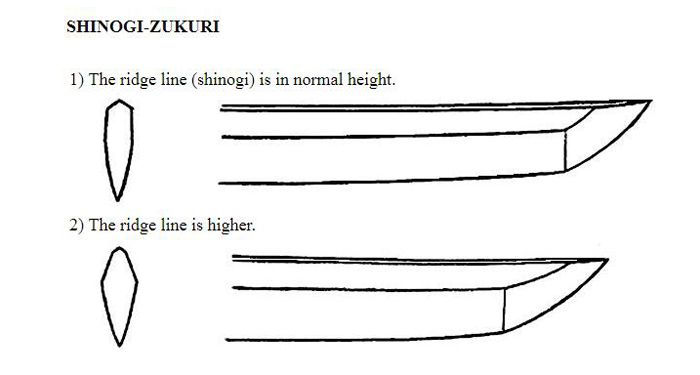Shinogi zukuri blade
06 Jul


0 Comment(s)
6961 View(s)
The shinogi, is a ridge on the blade that runs from the yokote to the end of the nakago. A blade with a shinogi is then said to be made in the shinogi-zukuri style, which is evolved as the most common Japanese katana blade design, provides both speed and cutting power.
Except for the width of the blade, it is the shinogi height that plays the greatest role in a blade's cutting ability. If the shinogi is high, the blade is strong and can cut hard materials. If the shinogi is low, the blade suffers less stress as it passes through a target and it can cut soft materials, but it is weak against hard materials. A medium shinogi is best for cutting both hard and soft targets. Tapering the shinogiji back towards the mune also reduces the surface area of the face of the sword when cutting through a target. This in turn reduces the drag on the blade while cutting.
Blades without a shinogi are nearly flat, without ridge (shinogi) or yokote, which are known as hira-zukuri. The hira-zukuri style blade is the sharpest edge and practically razor sharp, but it is prone to chipping or breaking when cutting medium to heavy targets. The shinogi is not the only determining factor of a blade, we must also examine the niku ( a clam shape).
Want a unique sword? Feel free to contact us:
Phone: 086 13739276006
Email: [email protected]
Website: www.hanbonforge.com
Custom Sword Page: www.hanbonforge.com/CUSTOM-SWORDS/Custom-Your-Own-Swords
Phone: 086 13739276006
Email: [email protected]
Website: www.hanbonforge.com
Custom Sword Page: www.hanbonforge.com/CUSTOM-SWORDS/Custom-Your-Own-Swords




Leave a Comment